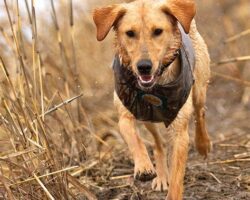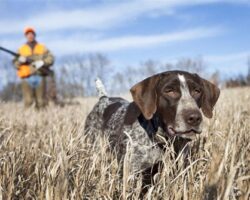Having a pet in your home brings joy and companionship, but it also requires a vigilant approach to safety. Our furry friends are naturally curious and can easily get themselves into dangerous situations if we’re not careful. In this blog post, we’ll delve into the hidden dangers that lurk in your home and explore how to pet-proof your living space to keep your beloved animals safe and sound. From identifying potential hazards and securing toxic chemicals to creating a pet-friendly indoor environment and preventing access to harmful plants and flowers, we’ll cover it all. By implementing the tips and strategies outlined in this post, you can ensure that your home is a secure and comfortable haven for your pets. So, let’s dive in and learn how to safeguard your furry friends from the potential dangers that may be lurking in your living space.
Identifying potential hazards for pets
When it comes to keeping your furry friends safe, it’s important to be aware of the potential hazards that can pose a risk to their well-being. By identifying these hazards, you can take proactive measures to protect your pets from harm.
One of the most common hazards for pets is toxic chemicals and medications that are often found in our homes. It’s crucial to keep all household cleaners, medications, and other chemicals stored securely out of reach of pets to prevent accidental ingestion.
Another important consideration for pet safety is electrical hazards. Pets are naturally curious and may be prone to chewing on electrical cords, so be sure to secure and cover any exposed cords to avoid potential shocks or other injuries.
Additionally, it’s essential to be mindful of potential choking hazards for pets, such as small toys, bones, or other objects that they may come into contact with. Keep these items out of reach to prevent choking incidents.
Securing toxic chemicals and medications
It is crucial to secure toxic chemicals and medications in your home to protect your furry friends from potential harm. Many common household items such as cleaning products, prescription medications, and even some plants can pose a danger to pets if ingested.
One of the first steps to securing toxic chemicals and medications is to store them in a locked cabinet or high shelf that is out of reach for pets. This will prevent curious animals from accessing these harmful substances.
Additionally, it is important to be mindful of where you leave medications. Pill containers left on countertops or tables can easily be knocked over by pets, exposing them to potentially harmful drugs.
Regularly check your home for any potential hazards and be sure to safely dispose of any expired or unused medications. By taking these precautions, you can help ensure the safety of your beloved pets.
Ensuring electrical safety for your furry friends
As pet owners, it’s important to ensure the safety of our furry friends, and that includes protecting them from potential electrical hazards. Pets, especially puppies and kittens, are naturally curious and may be attracted to electrical cords, outlets, and other electrical appliances in the home. It’s crucial to take proactive measures to minimize the risk of electrical accidents and keep our pets safe.
One way to ensure electrical safety for your pets is to secure all electrical cords and keep them out of reach. Use cord protectors or conceal cords behind furniture to prevent pets from chewing on them and potentially suffering from electrocution or burns.
Additionally, cover outlets with outlet covers to prevent pets from licking or sticking their paws into them. This simple step can help prevent electrical shocks and keep your pets safe from harm. It’s also important to unplug and store away any small electrical appliances when they are not in use to prevent pets from knocking them over or getting tangled in the cords.
Furthermore, regularly inspect electrical wires and cords for any signs of wear or damage, such as fraying or exposed wires. Replace any damaged cords immediately to prevent potential electrical hazards. By being proactive and mindful of potential risks, pet owners can create a safe and pet-friendly environment for their furry friends.
Creating a pet-friendly indoor environment
When you bring a new pet into your home, it’s important to make sure that your indoor environment is safe and welcoming for them. Creating a pet-friendly indoor environment involves taking several precautions to ensure that your furry friend stays happy and healthy.
One of the first steps in creating a pet-friendly indoor environment is to remove any hazards that could potentially harm your pet. This includes securing toxic chemicals and medications, as well as preventing access to harmful plants and flowers. By keeping these items out of reach, you can help protect your pet from accidental poisoning.
In addition to removing potential hazards, it’s important to provide your pet with a comfortable and stimulating indoor environment. This can include setting up designated areas for your pet to relax, play, and sleep. You can also consider adding pet-friendly furniture and toys to make their indoor experience more enjoyable.
Finally, creating a pet-friendly indoor environment also involves ensuring electrical safety for your furry friends. This may include securing loose cords and outlets, as well as keeping them away from dangerous household appliances. By taking these precautions, you can help keep your pet safe from electrical hazards.
Safeguarding your pet from choking hazards
When it comes to keeping your beloved pet safe, it’s important to be aware of potential choking hazards in your home. Pets are naturally curious and may be tempted to nibble on items that can pose a risk to their health. It’s important to be proactive in minimizing these risks and creating a pet-friendly environment that is as safe as possible for your furry friend.
One of the first steps in safeguarding your pet from choking hazards is to carefully inspect your home for small objects that could be easily swallowed. This includes items such as small toys, rubber bands, coins, jewelry, and household items that may be within reach of your pet. By keeping these items out of your pet’s reach, you can greatly reduce the risk of choking incidents.
In addition to small objects, it’s also important to be mindful of food items that can pose a choking hazard to pets. Foods such as bones, pits, and seeds should be kept out of reach, and uneaten food scraps should be disposed of properly to prevent pets from accessing them. Taking these precautions can help prevent your pet from choking on these potentially dangerous items.
Another important aspect of safeguarding your pet from choking hazards is to be aware of potential toxic substances that could be harmful if ingested. This includes items such as household cleaners, medications, and plants that can be toxic to pets. By keeping these items securely stored and out of reach, you can reduce the risk of your pet accidentally ingesting them and experiencing choking or other health issues.
Preventing access to harmful plants and flowers
When it comes to keeping your furry friend safe, it’s important to be aware of the potential dangers that certain plants and flowers can pose to them. Many common household plants and flowers can be toxic to pets if ingested, so it’s important to take steps to prevent your pet from accessing them.
One way to do this is by keeping any potentially harmful plants and flowers out of reach of your pet. Place them in high-up or enclosed areas where your pet cannot reach them, such as on top of shelves or in closed rooms. If you have outdoor plants that are toxic to pets, consider creating a barrier or fence to keep your pet away from them.
Another important step in preventing access to harmful plants and flowers is to educate yourself about which plants and flowers are toxic to pets. Some common examples of plants that are toxic to pets include lilies, tulips, daffodils, and azaleas. By familiarizing yourself with these plants and flowers, you can avoid bringing them into your home or garden.
In addition to keeping harmful plants and flowers out of reach, it’s also important to be mindful of any potential outdoor exposure. When taking your pet for walks or allowing them to roam in the yard, be sure to keep an eye out for any toxic plants or flowers and steer your pet clear of them.
Keeping your pet away from dangerous household appliances
It’s important to be aware of the potential dangers posed by household appliances when you have pets in your home. Pets are naturally curious and may investigate appliances, leading to potential hazards. One of the most common dangers is the risk of electrical shock from appliances with exposed wires or cords. It’s crucial to ensure that all cords are secured and out of reach of your pet to prevent any accidents.
Another concern is the heat that certain appliances emit. For example, radiators, space heaters, and stovetops can all pose a burn risk to pets if they get too close. It’s important to create barriers or use pet-proof covers to keep your furry friends away from these potentially dangerous heat sources.
Additionally, some appliances may contain small parts or components that can be hazardous if swallowed by a pet. This includes items like buttons, knobs, and batteries. It’s essential to ensure that these items are secure and inaccessible to your pet to prevent any choking or ingestion incidents.
Lastly, large appliances such as washing machines, dryers, and dishwashers can present dangers if a pet were to become trapped inside. Always double-check these appliances before use to ensure that your pet has not snuck inside, and consider adding a secure latch or lock to prevent access when the appliance is not in use.
Protecting your pet from open windows and balconies
When it comes to protecting your pet from open windows and balconies, it’s important to be proactive in ensuring their safety. Open windows and balconies can pose a significant risk to pets, especially if they are left unsupervised. One of the most effective ways to safeguard your pet from these potential dangers is to install secure window screens. These screens act as a barrier, preventing your pet from accidentally falling out of an open window or balcony.
Additionally, it’s crucial to inspect the strength and stability of balcony railings to ensure that they can support the weight of your pet. If you have a cat, it’s essential to be mindful of their curiosity and agility. Cats are known for their ability to squeeze through small openings, so it’s important to take proactive measures to prevent them from accessing open windows and balconies.
Another essential step in protecting your pet from open windows and balconies is to provide alternative areas for them to enjoy fresh air and sunshine. Creating a secure outdoor space, such as a fenced yard or enclosed patio, allows your pet to safely experience the outdoors without the risk of falling from an open window or balcony.
By taking these proactive measures, you can effectively safeguard your pet from the potential dangers of open windows and balconies, providing them with a safe and secure environment to thrive in.





